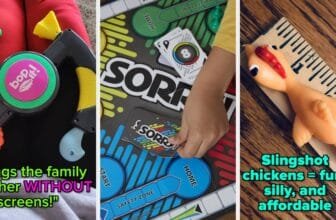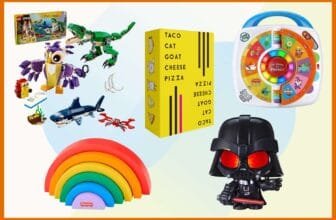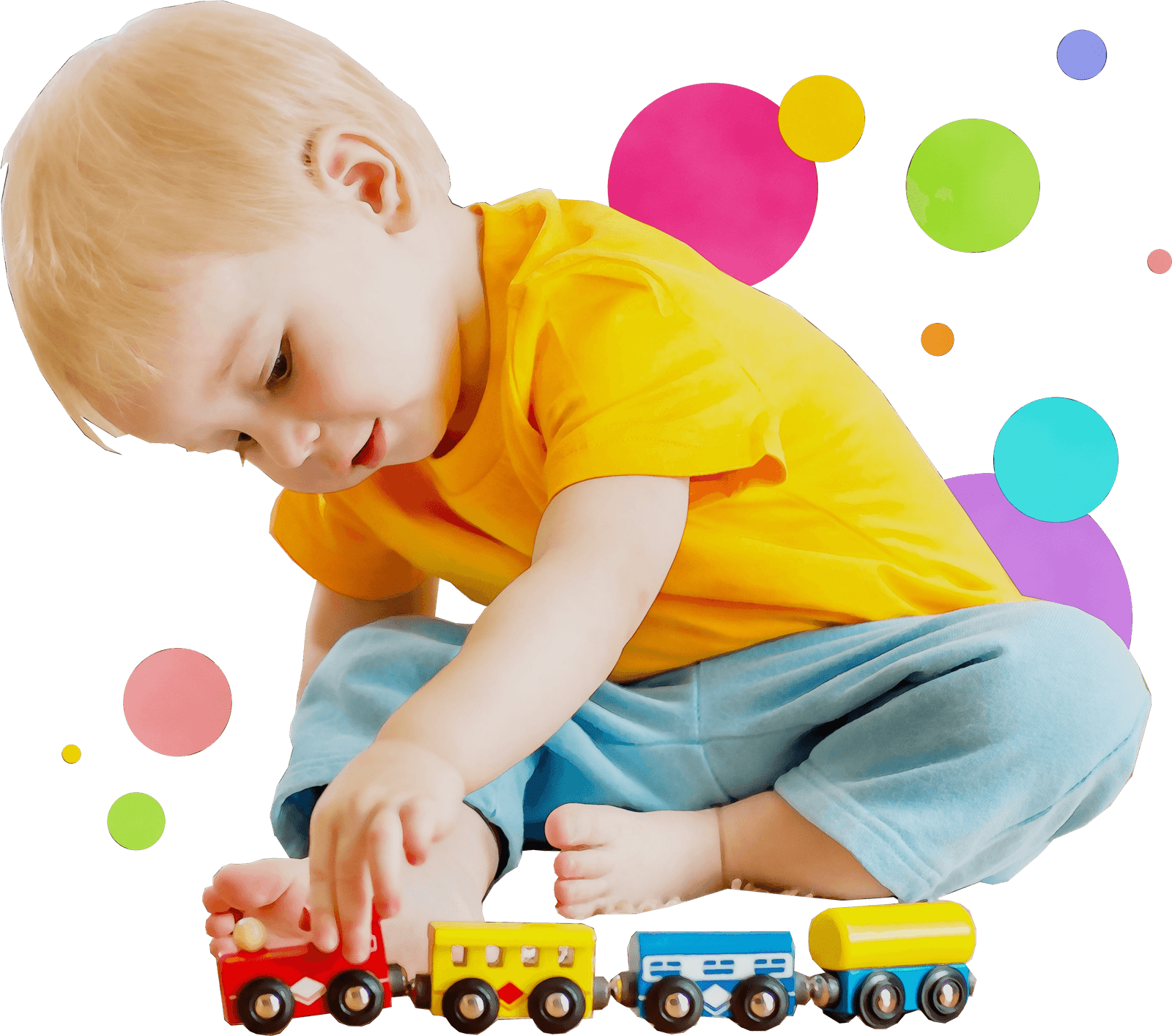
A lot happens during the 3- to 6-month-old period. Babies learn to move their hands and feet, begin babbling, and some even begin to crawl. They also learn how to manipulate toys: grabbing them, banging them, and mouthing them at first, and then exploring them with newly dexterous hands.
Toys that allow your baby to practice their latest skills and encourage new ones are a best bet, So are toys that work for more than one stage: A stacking toy is at first a bunch of colorful rings for your baby to mouth; later, the many-into-one magic of stacking the rings on their peg is a new delight. Here’s what your baby is working on at each stage, and toys they’re likely to enjoy.
Best toys for 3-month-olds
Your baby is getting stronger and more coordinated. Now they can reach for things that interest them, and bring them close to their body to get a better look. Expect them to mouth whatever they grab too, even though they may not be actually teething yet (most babies get their first toothOpens a new window between six and 10 months), because babies explore the world with their senses, Lohiser says.
To help with sensory development, Lohiser suggests toys or rattles that are easy to hold, have lots of textures to explore, and have bright contrasting colors or mirrors for your baby to look at. Musical toysOpens a new window are fascinating to most babies too, she says.
Lohiser is also a fan of play mats with wedges to support babies and toys, textures, mirrors to keep them busy during the 30 minutes of daily tummy timeOpens a new window recommended by advocacy groups like the AAP and World Health Organization.Opens a new window Lohiser calls play mats “great distractors,” and notes that though some babies protest tummy time, it helps babies develop the core and neck strength they’ll need for rolling over and then sitting up.
Best toys for 4-month-olds
As your baby transitions from a newborn into an infant, hand-eye coordinationOpens a new window takes a leap: your baby will reach and grab for anything that catches their eye (though they still may need you to place toys in their hands for some time yet). Eggleston says that playing with balls is a natural next step: “Through ball play, children build hand-eye coordination, motor development, spatial awareness, and balance,” she says. Toys with nubs or holes in them will be easier for babies to hold onto.
Your baby’s vision has also improved, and they can now see a full range of colors.Opens a new window Expect brightly colored objects to attract your child’s attention, along with any toy that reacts in response to your baby’s actions. Your baby is just beginning to realize they can have an effect on the world,Opens a new window and they love repeating actions like a tiny scientist who’s testing and experimenting.
During tummy time, your 4-month-old will soon be able to push up onto their elbows and roll from stomach to back. Your baby is continuing to develop the skills needed to sit up, crawl, and walk. Encourage these skills by scattering interesting toys in front of your baby and spending plenty of time on a play mat with toys, textures, or other items for your baby to discover and manipulate.
Best toys for 5-month-olds
Your baby’s ability to interact with you and his surroundings is growing as they start to understand cause and effect.Opens a new window Toys that make some type of pleasing noise when your baby does something with them (hits a button, shakes the toy, rolls it) are a good choice for this stage, and banging, shaking, and mouthing toys are all part of his experiments.
Your baby may now be able to get into a sitting position from his back, or may stay upright if you put them in a sitting position, using the core and neck strength developed over months of tummy time. Lohiser points out that babies are still learning to sit up and may need to be propped for support, but toys that encourage them to sit and play will help those skills continue to develop. Don’t be surprised if your energetic baby bounces up and downOpens a new window when you hold them, and adores any toy that lets them bounce: It’s all a normal progression to sitting, crawling, standing, and walking.
Best toys for 6-month-olds
By 6 months, babies are very interested in playing and exploring their world. “They’re becoming more confident sitters, can usually get from place to place by rolling, and they love to interact with someone else,” says Lohiser. “Look for toys with a variety of textures to explore, simple action/reaction activities, and toys that are easy to hold.”
Stacking ring toysOpens a new window are classic for babies 6 months old and up that experts recommend for both gross and fine motor skill practice. Though they won’t be able to stack the rings for a while yet, they love mouthing them and practicing moving them from one hand to another.Opens a new window
Your baby uses all the senses to explore the world, and toys that appeal to two or more of them are a good bet: toys that both make noise and spin, for instance, or balls with interesting textures. “They love repetition in songs and actions like drop-through play, rollers, doors, and spinners. Their fine motor skills are more developed and they are ready to use those fingers,” says Lohiser. Books are also of new interest: “Babies at this age also love pictures of objects or people in book format, or colorful patterns,” says Lohiser.
Kelly Bailey contributed to this story.






